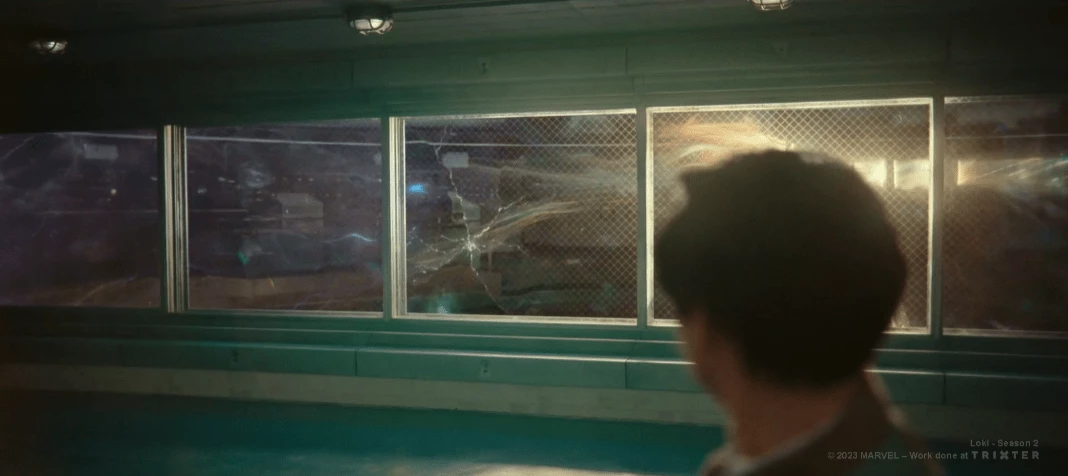What Loki Season 2 Looks Like Without The Help Of VFX
#1. Before VFX
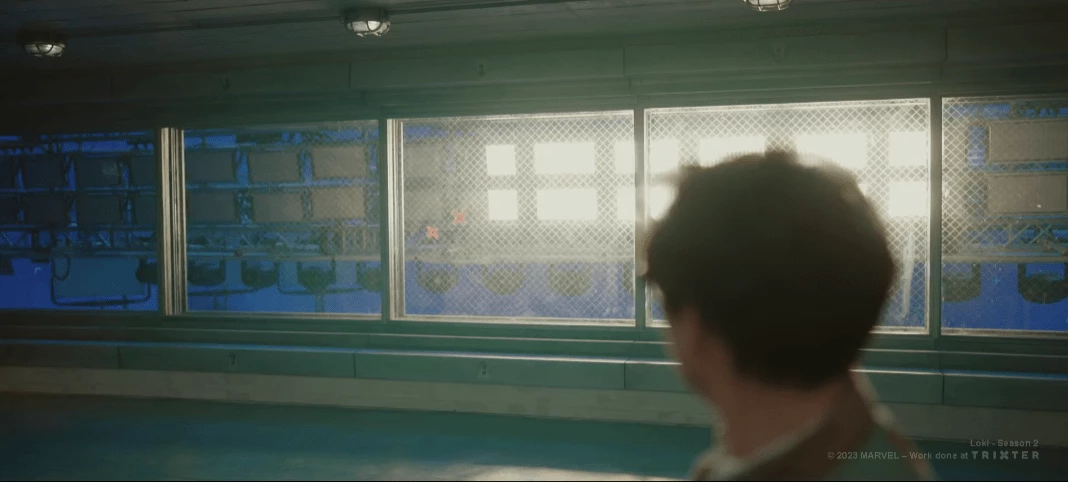 Source: artofvfx
Source: artofvfx
After VFX
#2. Before VFX
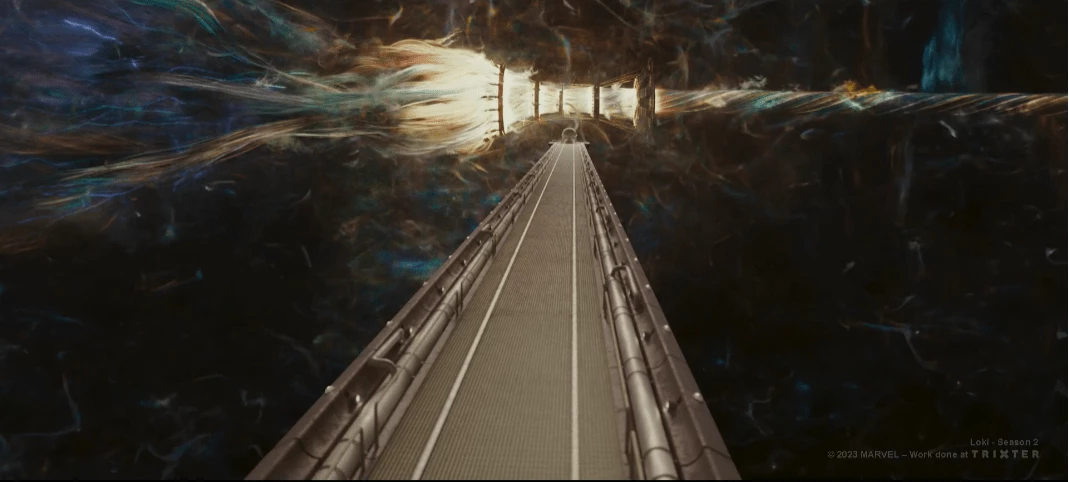 Source: artofvfx
Source: artofvfx
After VFX

Collaborating with Kevin Wright, Marvel Studios' Executive Producer, and the directors of four episodes, Aaron Moorhead and Justin Benson, was an incredible experience. They had thorough discussions about their goals for the new series, and Aaron and Justin had a clear vision for the show's look and style.
#3. Before VFX
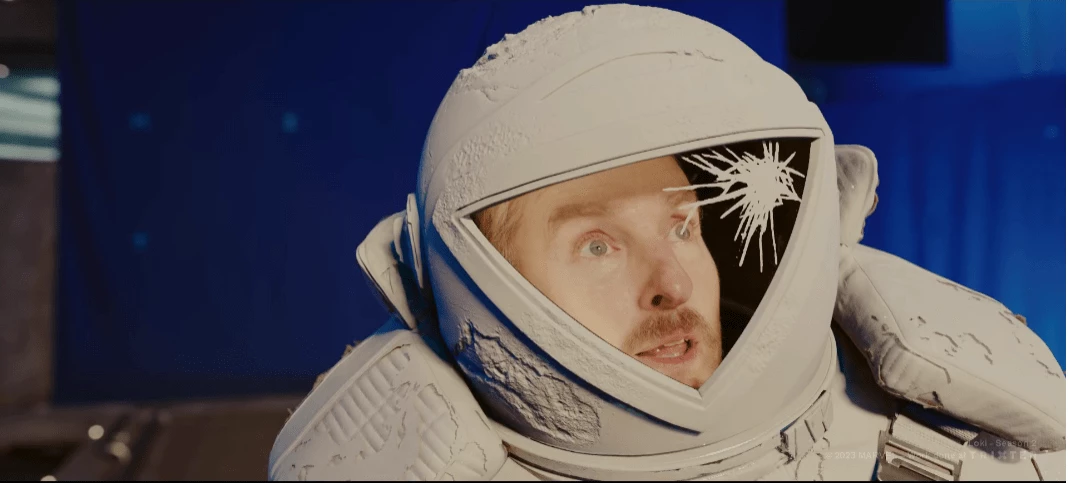 Source: artofvfx
Source: artofvfx
After VFX
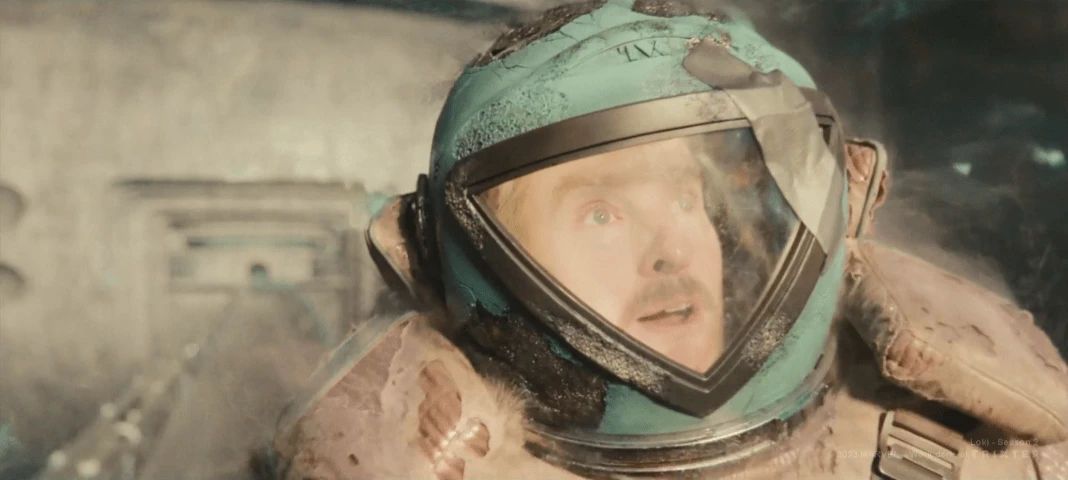
The inaugural season established a distinct visual identity, benefiting from the return of many key crew members, including Production Designer Kasra Faharani, who also helmed one of the episodes. His specific visual language set the tone, and we carried it into the second season. However, the intention was to introduce a touch of grit, embrace a more lo-fi aesthetic, employ depth hazing, and adopt a more deliberate approach to the camera.
#4. Before VFX
 Source: artofvfx
Source: artofvfx
After VFX

Allison Paul served as the VFX Producer on both seasons and their knowledge of everything Loki was indispensable. Several companies had worked on the first season, and they brought that understanding to the second; they wanted to improve and enhance things where they could, but already having a shorthand was really useful.
They broke the scripts down, episode by episode, organizing similar types of work as much as they could. Having six episodes, with six different final delivery dates, made things a little more complicated but ultimately worked out really well.
#5. Before VFX
 Source: artofvfx
Source: artofvfx
After VFX
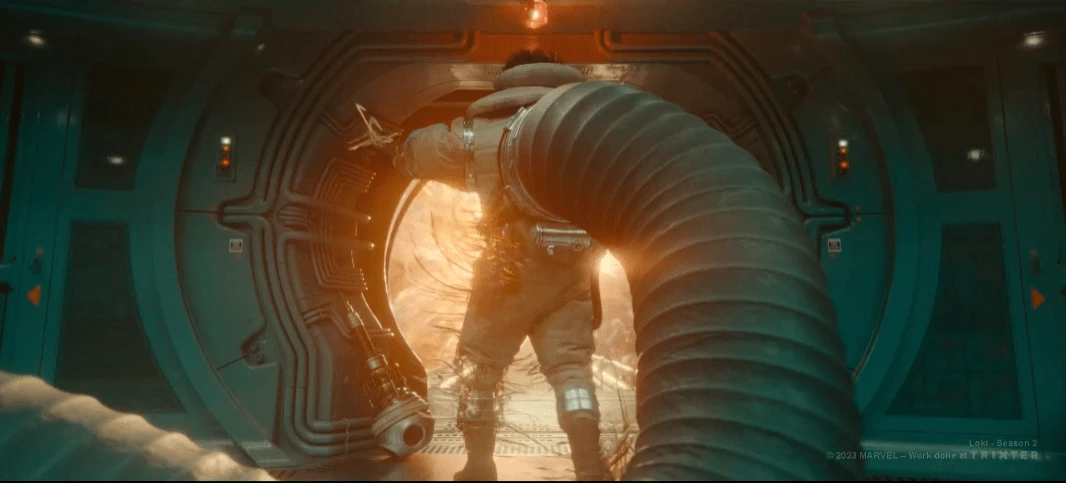
They chose VFX vendors according to the work, both in terms of type (animation, heavy FX, environment, conceptual, etc.) and volume of shots. Playing to a vendor’s strengths is often the best approach, but sometimes asking somebody to do something new for them elicits exciting solutions and gets the creative juices flowing.
#6. Before VFX
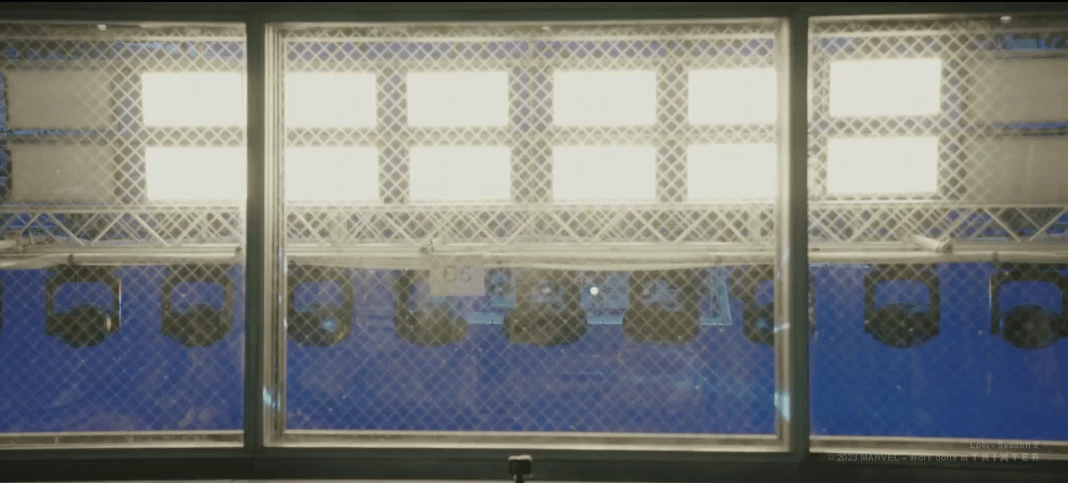 Source: artofvfx
Source: artofvfx
After VFX

They see various parts of the TVA and earth destroyed as timelines are pruned. Using the same general motif of strands of time as used elsewhere in the show (timelines, weaving threads in the Loom, the stringy aspect of Time Slipping, etc.), and theoretically what happens if he were to be sucked into a black hole, they created what they called Spaghettification.
CG models of objects and characters were created, then extruded into tangible, physical strands, rendered as their source colors and textures. Framestore established the look and did most of the Spaghettification effects seen throughout the show, and Trixter spaghettified Timely.
#7. Before VFX
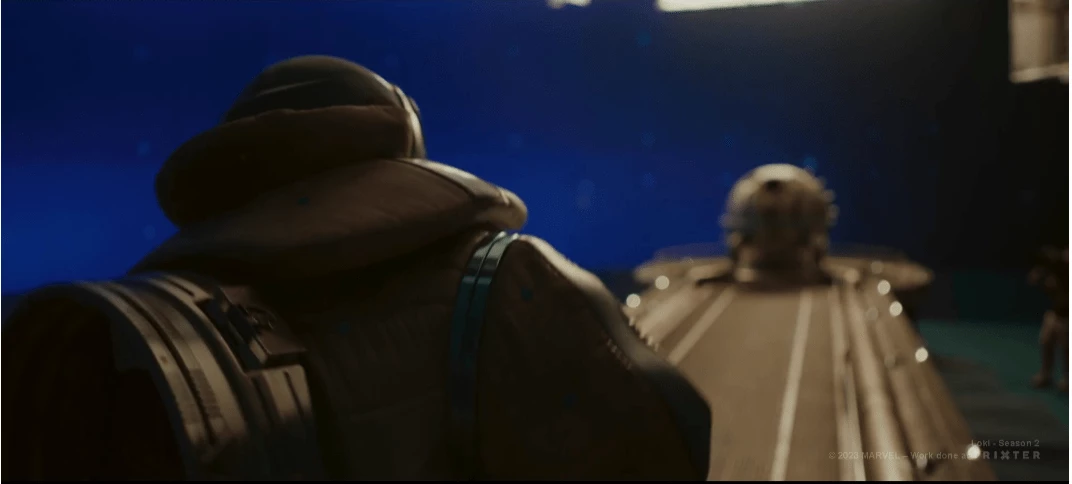 Source: artofvfx
Source: artofvfx
After VFX
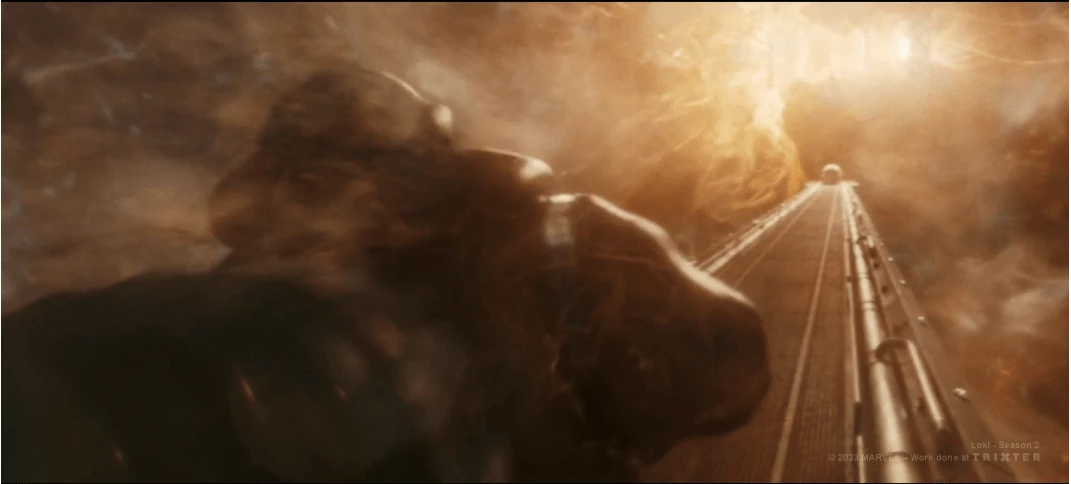
On the backlot at Pinewood Studios in London, the Art Department beautifully recreated a large portion of the Midway, the concourse flanked by various country’s buildings in the 1893 Chicago World’s Fair, and a single SFX gimballed carriage for the world’s first Ferris Wheel. Industrial Light and Magic then extended the set into an expansive environment, adding in more crowds, both photographed and digital, and completed the wheel into its imposing form.
They created a full nighttime CG version of the white city portion of the Fair, with its splendid white buildings surrounding waterways, as seen from the top of the wheel. We see it again in a different view from a steamship, itself based on a small set piece that ILM extended, as we look across Lake Michigan.
#8. Before VFX
 Source: artofvfx
Source: artofvfx
After VFX

Time Slipping, an effect they had a lot of fun creating, was conceived with many different looks before finally ending up with the dramatic effect seen. Once the hero performance take was done, all the other actors stepped offset, a small green screen was brought out, and the camera action was repeated with Tom Hiddleston giving a variety of different actions that could be used as interstitial poses; they were asked to give a range of slow, aggressive, swirling, reaching, painful, stoic, and fast actions.
Once all the pieces were gathered, a clean background plate was shot without Tom. With all of those different passes, Editorial created a cut showing the intended pacing of the moment, and VFX then selected individual bits from the different passes and slapped them together.
#9. Before VFX
 Source: artofvfx
Source: artofvfx
After VFX

With the initial brief of slipping through time, they cast a wide net, looking for inspiration for the aesthetics and desired emotional impact. They looked at everything from long and multiple exposure photography, cubist paintings, and portraits by Francis Bacon before finally settling on an amalgamation of many different things.
They wanted it to still have a stringy component, as it was all connected to time, which they generally visualized as threads. The directors wanted it to feel very physical and have an element of horror gore, so they suggested a stretchy, taffy-like stringy effect connecting the various moments.
#10. Before VFX
 Source: artofvfx
Source: artofvfx
After VFX
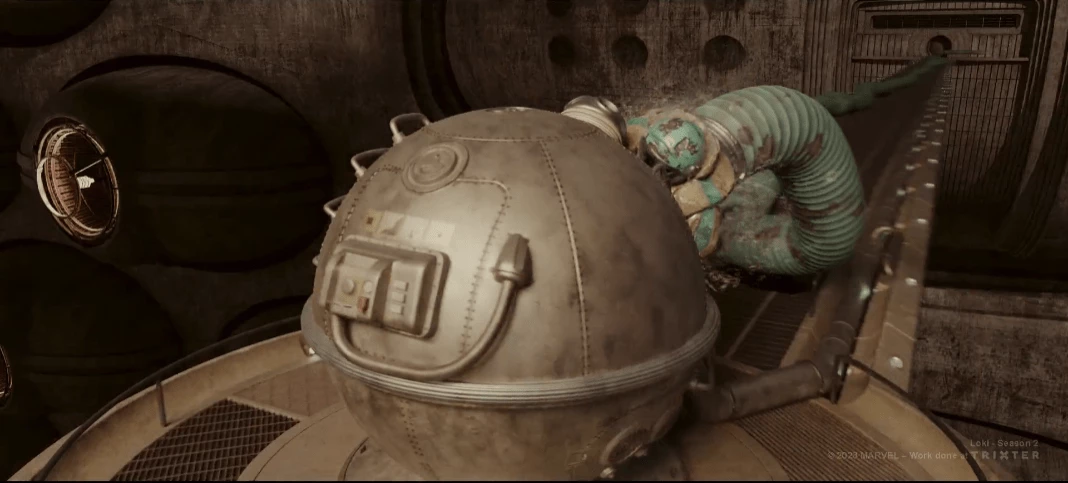
Trixter tackled the challenge of creating the Temporal Core Environment, where they depicted the galactic Loom weaving time together. The Loom's massive scale and narrative significance posed a considerable challenge. Trixter's concept department, drawing inspiration from Marvel's visual development and initial script ideas, refined the concept over months. They redesigned the timelines, opting for a more tangible and physical appearance compared to Season 1.
Transitioning from the first season's look to the new one while maintaining narrative coherence presented its own set of challenges. The Loom, with its vast scale, animated and simulated timelines, and intricate storytelling, required meticulous modeling and texturing.
#11. Before VFX
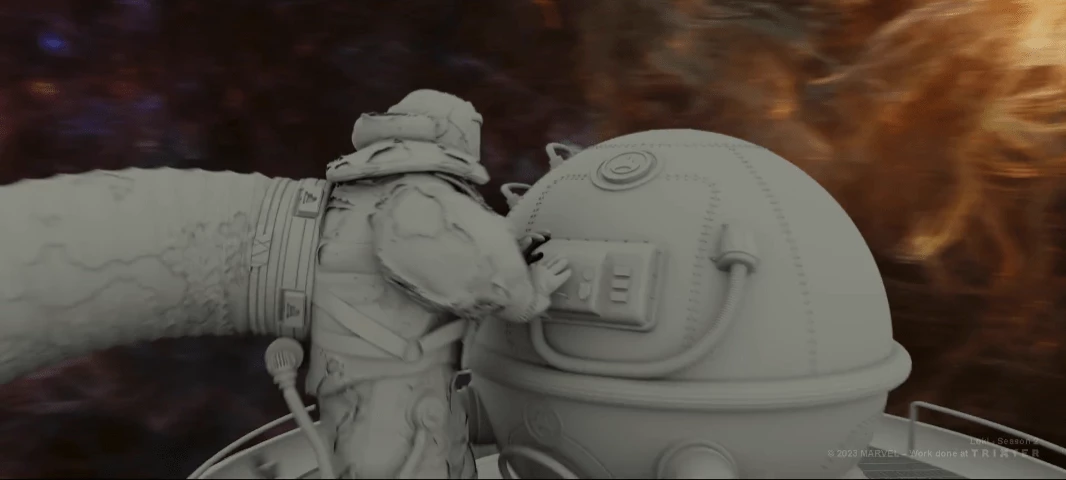 Source: artofvfx
Source: artofvfx
After VFX

One of the final shots, revealing Loki at the heart of a galactic Yggdrasil tree formation, was probably their most challenging. Framestore created the long, powers of ten shot, with complex simulations weaving together timelines as they race out, and rendering the multiple layers became a challenge in its own right.
#12. Before VFX
 Source: artofvfx
Source: artofvfx
Related Articles
- Before Movie Magic: 19 Unbelievable Moments Without Special Effects
- 30 Incredible Behind-The-Scenes Photos That Shed New Light On Movie Making
- 25 Exclusive Movie-Making Photos You Can't Find Anywhere Else
- 17 Behind-the-Scenes Pictures That Every Movie Buff Can't Miss
- Inside Black Widow: 14 Behind-the-Scenes Photos Revealing The Movie's Production Secrets
- Cinematic Secrets Revealed: 22 Unforgettable Behind-the-Scenes Shots Featuring Epic Practical Effects
- 20 Behind-The-Scenes Photos That Reveal The Wild World Of Movie Making
- 30 Exclusive Behind-the-Scenes Stories Of Movie Making That Define Movie Magic
- 10+ Hilarious Behind-The-Scenes Photos From Marvel Movies That Will Make You Laugh All Day
- Candid Chronicles Of The Unseen – 15 Untapped Behind-the-Scenes Moments!
